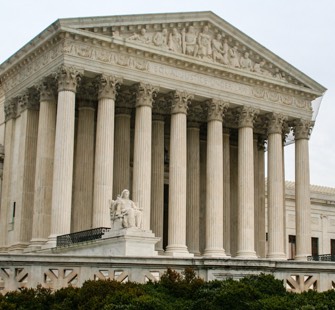 Recently, a group of amici led by Eli Lilly filed an amici curiae brief with the United States Supreme Court in the matter of Sequenom, Inc. v. Ariosa Diagnostics, Inc. The Eli Lilly brief was filed in support of the petitioner, Sequenom. Eli Lilly is joined in this brief by Eisai Inc., Upsher-Smith Laboratories, Inc., Pfizer Inc., and Etiometry, Inc.
Recently, a group of amici led by Eli Lilly filed an amici curiae brief with the United States Supreme Court in the matter of Sequenom, Inc. v. Ariosa Diagnostics, Inc. The Eli Lilly brief was filed in support of the petitioner, Sequenom. Eli Lilly is joined in this brief by Eisai Inc., Upsher-Smith Laboratories, Inc., Pfizer Inc., and Etiometry, Inc.
On March, 21, 2016, Sequenom filed a Petition for Writ of Certiorari in the Supreme Court, challenging the decision of the United States Court of Appeals for the Federal Circuit in Ariosa Diagnostics, Inc. v. Sequenom, Inc. If the Supreme Court takes this case, they will be asked to reconsider the unfortunate breadth of their prior ruling in Mayo Collaborative Servs. v. Prometheus Labs. See SCOTUS Blog Founder asks Supreme Court to Reconsider Mayo.
Many argue that the Supreme Court, in the Mayo v. Prometheus decision, conflated the various sections of the Patent Act, forcing a multiplicity of issues into a single patent-eligibility inquiry. Rather than use the word “conflate” to describe the mongrel mixture of patentability requirements the Supreme Court undertook in Mayo, the Eli Lilly brief characterizes the analysis employed by the Supreme Court as including a separate, implicit “threshold test” for patentability that is applied even before consideration of the statutory patentability requirements. Eli Lilly hypothesizes this “implicit exception was imposed to assure that patents cannot validly protect—or preempt access to—laws of nature, natural phenomena, or abstract ideas.”
The Eli Lilly brief goes on to explain that this implicit exception is unnecessary and should be abrogated:
Today, explicit statutory provisions of the contemporary Patent Act found in 35 U.S.C. §§ 101, 102, 103, 112(a), 112(b), and 112(f) serve to preclude securing a valid patent on the same subject matter that the policy justification for the implicit exception sought to bar from patenting. Therefore, the Court should now consider abrogating the implicit exception in deference to the explicit patentability requirements that Congress imposed.
The brief goes on page after page to show exactly how the sections of the Patent Act, individually and in combination, can and do work together to prevent laws of nature, natural phenomena and abstract ideas from being patented. Ultimately, the amici brief concludes:
The statutory framework of the patent law has developed to fully address the policy rationale that led the Court to augment the statutory patentability requirements with its non-statutory “implicit exception.” Given the manifest difficulties that the implicit exception presents to the proper functioning of the patent laws, the Court should address whether judicial restraint now dictates deference to the statutory framework.
Hopefully the Supreme Court will take this case and refine the Mayo test so that important scientific breakthroughs will once again become patent eligible.
Tags: Eli Lilly, patent, Patent eligibility, patentable subject matter, patents, SCOTUS, Sequenom, Supreme Court




You share in the PLI Practice Center community, so we just ask that you keep things civil. Leave out the personal attacks. Do not use profanity, ethnic or racial slurs, or take shots at anyone's sexual orientation or religion. If you can't be nice, we reserve the right to remove your material and ban users who violate our Terms of Service.